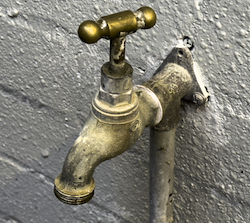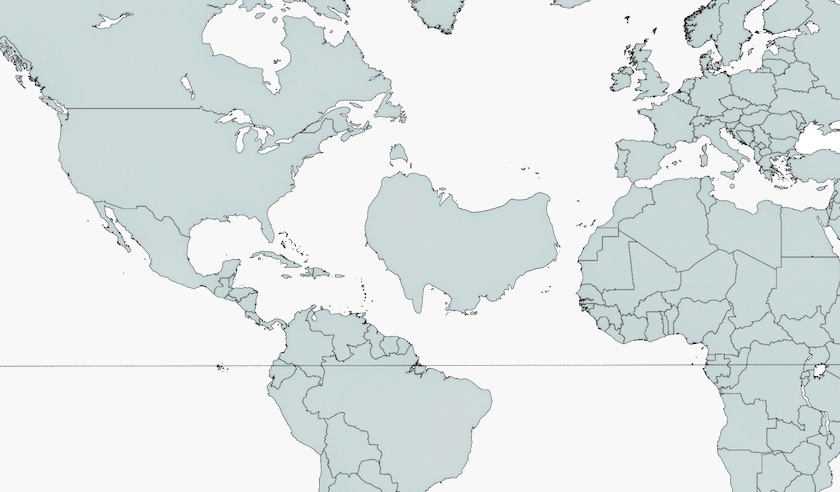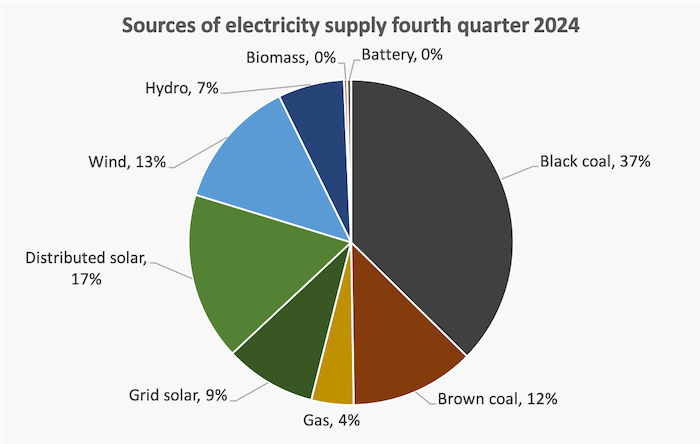Australia’s energy transition
Nuclear power – more confirmation of its cost
The Coalition’s idea of replacing “base load” coal-fired stations with nuclear power would result in much more expensive electricity than options based on renewables, would not see a single kWh delivered until 2035 at the earliest, and would require the re-commissioning or reconstruction of fossil-fuel power stations in the interim, contributing to CO2 emissions.
These were covered in the roundup of December 21 but there are further developments, all pointing to the folly of building nuclear plants in Australia.
Dutton’s deliberate price-bill confusion
Since December when the Coalition provided a few more (confusing) details on its nuclear power ideas, Dutton has appeared on Insiders, claiming that under the Coalition’s nuclear plan our electricity bills would be 44 percent lower.
Sophie Vorath of Renew Economy carefully examines and rebuts what Dutton said in that interview: Lies, damned lies and Coalition energy economics: Dutton’s latest nuclear claim slammed. The costings are wrong, and Dutton slips from saying that our bills will be 44 percent cheaper to saying the price of electricity will be 44 percent cheaper.
That 44 percent is simply an estimate of a supposed change in total national expenditure on electricity in future years, based on inadequate and highly optimistic estimates of the cost of nuclear reactors, on unconventional accounting practices, and on an assumption that our electricity consumption will be far less than AEMO estimates. The Coalition’s case for nuclear power says nothing about prices to customers or households’ bills.
David Speers picked him up on his conflation of prices and bills, but not all journalists are as diligent. In a recent 730 program Sarah Ferguson failed to challenge Coalition energy spokesperson Ted O’Brien when he made the same deceitful ploy. Many people don’t stop to think of the difference between the price and the size of the bill and easily fall for that 44 percent figure. The Coalition wouldn’t make that error in print, but media like television are more forgiving of the use of loose language to convey falsehoods.
Sophie Vorath quotes Smart Energy Council chief John Grimes as saying “Mr Dutton is either dangerously ill‑informed or he is lying to the Australian public”. Grimes is charitable in giving Dutton the benefit of the doubt: Dutton was a police officer, who would have had to appear in court and to the media. He would well know that precise language counts.
Under the Coalition’s nuclear plan, unless the construction of reactors is massively subsided from public budgets, the price of electricity will be much higher than it is now, and that’s before taking into account the cost-of-living support subsidies.
Rooftop solar would be sacrificed to nuclear power
In that December roundup it was pointed out that nuclear power is incompatible with rooftop solar. Indeed, baseload 24/7 power, be it nuclear or fossil fuel, is incompatible with solar.

According to analysis by the Smart Energy Council, rooftop solar will have to be turned off for two thirds of the time to accommodate nuclear power: Power bills for solar homes will double under Dutton. The SEC estimates that households with solar presently pay between $900 and $1400 a year for electricity. With their panels partially disabled, they would be paying an additional $1100 and $1400 a year. You can also hear Wayne Smith of the SEC in an interview explain the mathematics, engineering and economics of these calculations on ABC News: Renewable sector warns nuclear will increase rooftop solar costs.
We need to understand the difference between baseload power, which was the way engineers thought about electricity in the nineteenth and twentieth century, and dispatchable power, which is how engineers now think about renewable electricity backed up by storage. As a first-order analogy, think of the difference between having an open pipe constantly discharging water, and a pipe with a tap you can turn on as you need it.[1]
Nuclear power is big and expensive. Really big and therefore really expensive
OK, we know that, but do we really understand the scale of what the Coalition is proposing? Just last week a National Party MP gave the impression that a few days after a Coalition government is elected, work will start on the first few power plants.
We can get some idea of what would be involved from a 13-minute video clip Overbudget: Britain’s $57bn Nuclear Nightmare. The message is a familiar one: nuclear power stations run massively over budget, and over time. (The power plant in the video, Hinkley, is costing three times as much as promised and is running 14 years late). That’s in the UK, a country that already has nuclear reactors and some experience in nuclear power.
That’s about the hard numbers.
But watch the video on full screen, to get an impression of how massive these projects are. As you see the forest of cranes and the engineering structures, think of the railroads, freeways, hospitals and other infrastructure we would not be building in order to build seven reactors, five of which are full-scale – Britain is building only two.
If you watch this video you will have a firmer grasp of the opportunity cost of nuclear power. It would come at a huge cost to our other national infrastructure.
All explained in three minutes
Juice Media on the Liberals’ nuclear proposal – with a sting in the tail for the government.
Geography 1 – why Sydney’s local councils don’t have snowploughs
A consistent message from the nuclear power lobby is that Australia is on its own as a “developed country” without nuclear power. Canada is often held out as an example of a country, similar to Australia, that is heavily dependent on nuclear power, and is building more.
Let’s look at a little geography. The Canada-US border runs along the 49th parallel of latitude, while the south coast of Tasmania is at 43 degrees.
The map below, constructed with a little help from Photoshop, shows where Australia would lie if it were in the northern hemisphere. Melbourne is on about the same latitude as Lisbon, Sydney lies to the south of all of Europe. Our inland, where there are rich renewable energy zones, are on the same latitude as the Sahara Desert.

The basic geography of solar energy is that the closer one is to the equator, the longer are the winter days, which means solar power can make significant contributions throughout the whole year. That’s why countries in lower latitudes are still building nuclear power plants, and we should be too if we lay 10 or 20 degrees further south. (But as with demographic trends, geography is also against Dutton – we’re drifting about 7 cm towards the equator every year.)
1. The output of coal-fired plants can vary with demand, but there always has to be a certain amount of fuel consumed to keep the generator rotors spinning. Also, because the output of coal-fired plants can be adjusted only slowly, there always has to be excess supply to cater for possible demand. A coal-fired station is like a tap that is always running but which can be opened further. A nuclear power plant has to be kept running at high capacity, however, because of the physics of radioactive decay. It is more like a tap that is kept fully open. ↩
A milestone in Australia’s energy transition
The Australian Energy Market Operator Quarterly Report on Energy Dynamics is a routine publication, but the 2024 4th quarter report announces a milestone, because this is the first quarter in which the share of coal as a source for electricity generation in the National Electricity Market has fallen below 50 percent. This is in spite of higher-than-normal temperatures driving record high fourth quarter demand.
The contribution of all sectors is shown in the pie chart below.

The big growth in supply has been in distributed (rooftop) solar, compared with the same period in 2023.
Wholesale prices rose, however, mainly because coal-fired generators, constrained in their output, were able to raise prices to meet the high demand. Wholesale prices were lowest in South Australia ($52/MWH) and Victoria ($45/MWH), but because of capacity constraints in existing high-voltage power lines (the interstate interconnectors) these low prices were not enjoyed in New South Wales and Queensland.
AEMO does not comment on the politics of the NEM, but it is clear from this report that if the benefits of low-cost renewable energy are to be enjoyed, we need to build new power lines and to get a move-on with ones already in the planning stage. In what can only be classified as obstructionism for party political purposes, the Liberal and National Parties, and their front organizations, are mobilizing farmers and others to protest against the construction of power lines (and against solar and wind farms). Also, if prices in the NEM can be sustained at levels that are high enough for long enough, the closer does nuclear energy start to look viable (although it has a long way to go).
The NEM reports prices in the not very consumer-friendly metric of $ per MWH. To convert these to friendlier units – cents per kWh as appears on our bills – change the $ sign to cents, and divide by 10. Thus the wholesale cost of power in South Australia, the state most advanced in renewables (after Tasmania), is 5.3 cents. The other 30 to 40 cents per kWh that appear on your bill, go to the overpaid private owners of transmission lines, and the “retailers” – commission agents who take a share of your bill for doing very little.
The Coalition blames the government’s renewable energy program for high electricity prices. That’s a blatant lie, but the Albanese government should be criticized for not re-nationalizing the electricity transmission and distribution system. The NEM is so generous to private owners that it makes banks and supermarkets look competitive.
Let’s have free electricity
Throughout the NEM on most days there is an excess of solar energy available, largely because of the growth in rooftop solar, resulting in negative wholesale prices at times.
One response to that excess is for households to install domestic batteries, and rooftop solar is very useful if you have an electric car. Even so there is likely to be an ongoing excess supply.
Another response is use of time-of-day variable tariffs. In fact there are still remnants of old tariff structures that charge less at night: that’s completely the wrong way around.
Australia has missed the chance to have truly smart meters that would allow your energy use and the price you are paying to be displayed on your phone or other screen. The so-called “smart” meters being rolled out are ancient pre-WIFI technology.
One energy and economics expert to whom I was recently talking suggested that a measure to help shift consumer and small business demand to times when energy is plentiful and really cheap, reducing the demand on grid-scale batteries and pumped hydro and speeding up the energy transition, would be to make electricity free, say from 9 am to 5 pm, every day.
The economic reasoning is simple: it would result in a more efficient allocation of resources, which is the fundamental criterion for economic efficiency. It also makes sense in terms of the findings of behavioural economics, because people react much more enthusiastically when something is free rather than being subject to a price reduction, no matter how small that price is.